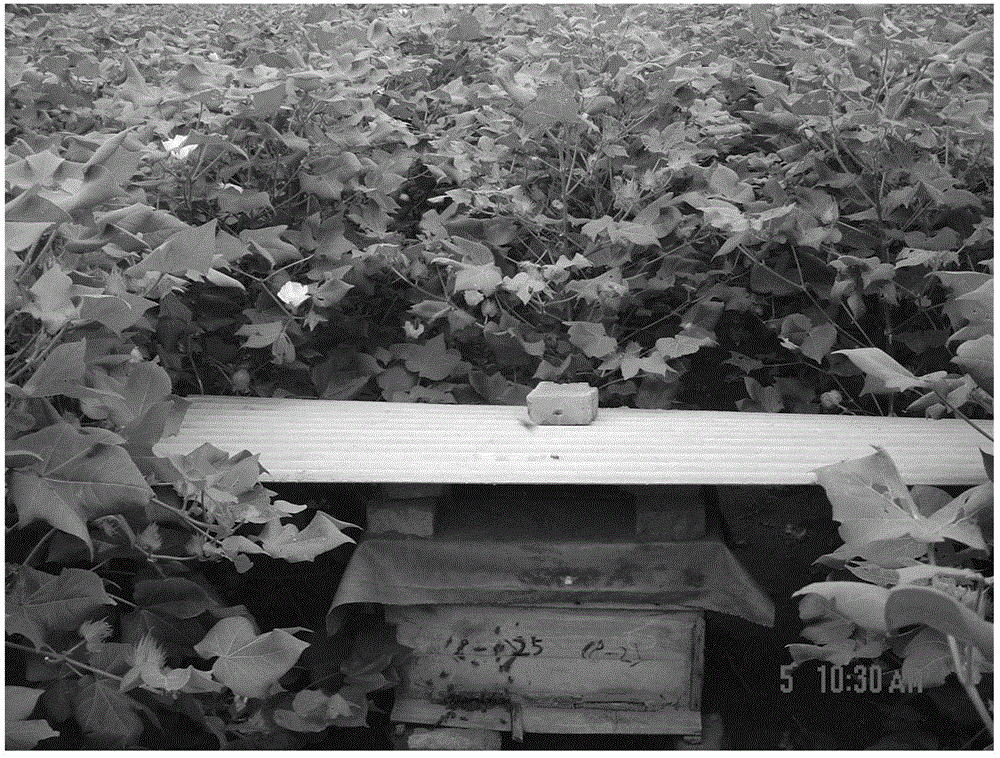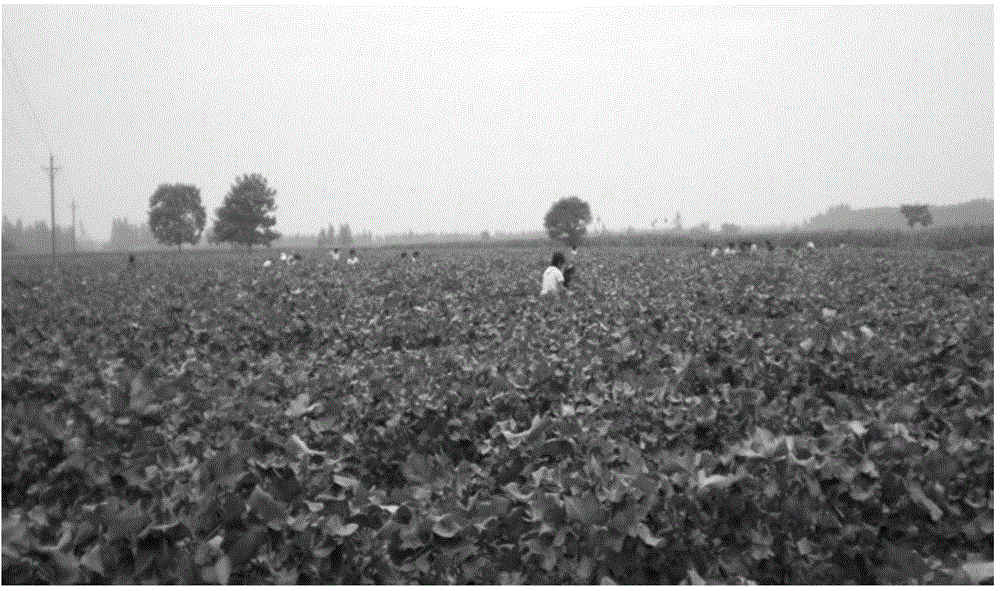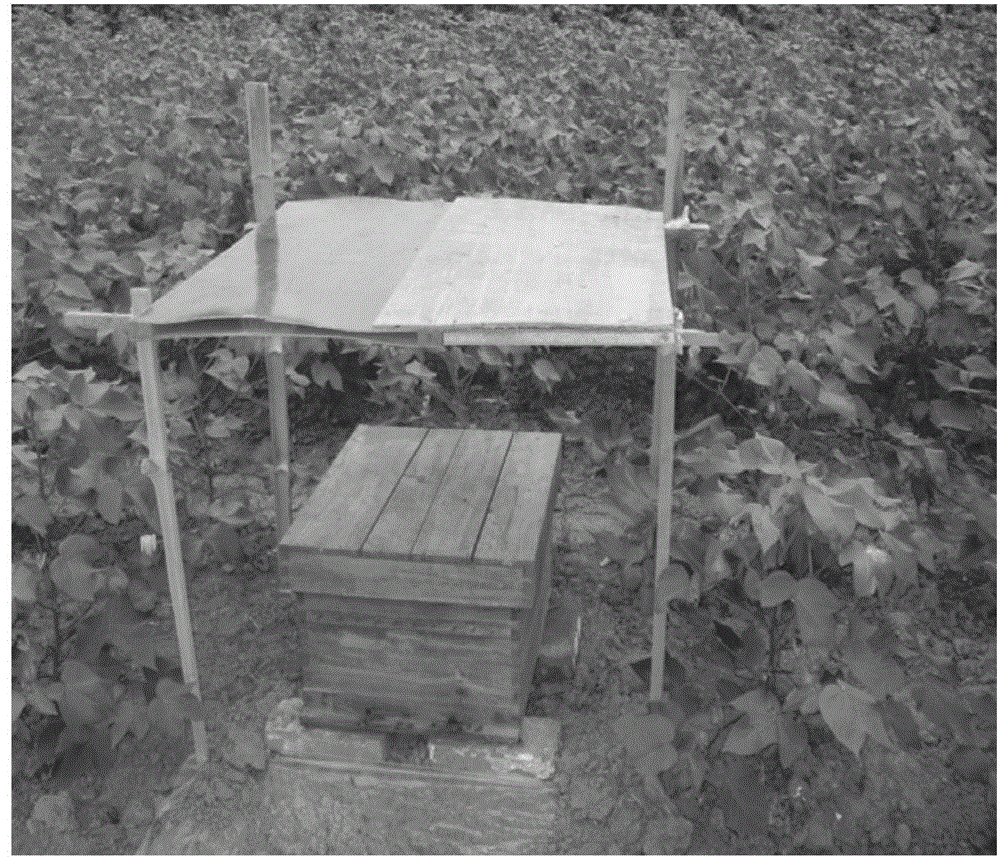Seed production method for cotton cytoplasmic male sterile line by utilizing insect hybridization
A technology of male sterile lines and hybrid seed production, applied in botany equipment and methods, applications, plant genetic improvement, etc., can solve the problems of not meeting the needs of cotton production and development, difficulty in ensuring the purity of seed production, and difficulty in finding labor. , to achieve the effect of simplifying seed production procedures and production links, reducing labor intensity and supervision difficulty, and avoiding uneven density
- Summary
- Abstract
- Description
- Claims
- Application Information
AI Technical Summary
Problems solved by technology
Method used
Image
Examples
Embodiment 1
[0033] Embodiment 1 Confirmation of parental planting method
[0034] experimental method:
[0035] 1. Variety and source of parents used for seed production:
[0036] Male parent: HAF277, female parent: HAM277. Source: It is derived from the three-line material of the cotton Hackneysy cytoplasmic sterile line (CMS) introduced by the American Circle Company in 1979, and the material has been publicly distributed around the world.
[0037] 2. Sowing method and time: live broadcast, late April.
[0038] 3. The planting ratio of father and mother: 1:4.
[0039] 4. Sowing density: 3000 plants / mu.
[0040] 5. Seed production period: July 10 to August 20.
[0041] 6. The species and source of the honeybees used: Apis subspecies, commercially available.
[0042] 7. Bee release time: 8:00 am and 17:00 pm every day.
[0043] 8. The amount of bees released: 1 box per mu, 7000-10000 bees per box
[0044] 9. Farming isolation distance: more than 1 kilometer.
[0045] Sowing metho...
Embodiment 2
[0049] Embodiment 2 The confirmation of the planting row ratio of parents
[0050] Experimental method: The parents were planted alternately according to the row ratio, and four treatments were set for the planting ratio of the parents: 1:3, 1:4, 1:5, and 1:6 for comparison, and the others were the same as in Example 1. The results are shown in Table 2.
[0051] Table 2 The effect of parental ratio on cotton cytoplasmic sterile line using insect hybrid seed production
[0052]
[0053] Through small-scale field experiments on bee pollination in Nanyang and Anyang, the effects of insect pollination and seed production under different planting ratios of parents were systematically compared and analyzed, and the conclusions were drawn as follows: the parents were planted in a ratio of 1:3 The number of bolls per plant, the yield of seed cotton and the yield of seeds were the highest in seed production, and the boll number per plant, yield of seed cotton and seed yield of seed...
Embodiment 3
[0054] Confirmation of Example 3 Pollinating Insects
[0055] Experimental method: Two treatments of Italian bee and bumblebee were set up for pollination insects to compare. The sources are all purchased from the market, and the parents are planted alternately at a row ratio of 1:4.
[0056] The experiment compared the pollination effect of honeybee and bumblebee species, and compared it with the effect of artificial pollination. The results showed that the pollination effect of bees was relatively ideal, which was similar to the yield of artificial pollination seed production in the same period, which was equivalent to the artificial pollination system. About 80% of the seed production. It is difficult to raise bumblebees, the cost is high, and the source of bees is difficult to find, while honey bees are more popular, easy to raise, and low in cost. The Italian subspecies of bees is suitable for breeding in plains (large honey sources), so it is a more suitable pollinator. ...
PUM
 Login to View More
Login to View More Abstract
Description
Claims
Application Information
 Login to View More
Login to View More - R&D
- Intellectual Property
- Life Sciences
- Materials
- Tech Scout
- Unparalleled Data Quality
- Higher Quality Content
- 60% Fewer Hallucinations
Browse by: Latest US Patents, China's latest patents, Technical Efficacy Thesaurus, Application Domain, Technology Topic, Popular Technical Reports.
© 2025 PatSnap. All rights reserved.Legal|Privacy policy|Modern Slavery Act Transparency Statement|Sitemap|About US| Contact US: help@patsnap.com



